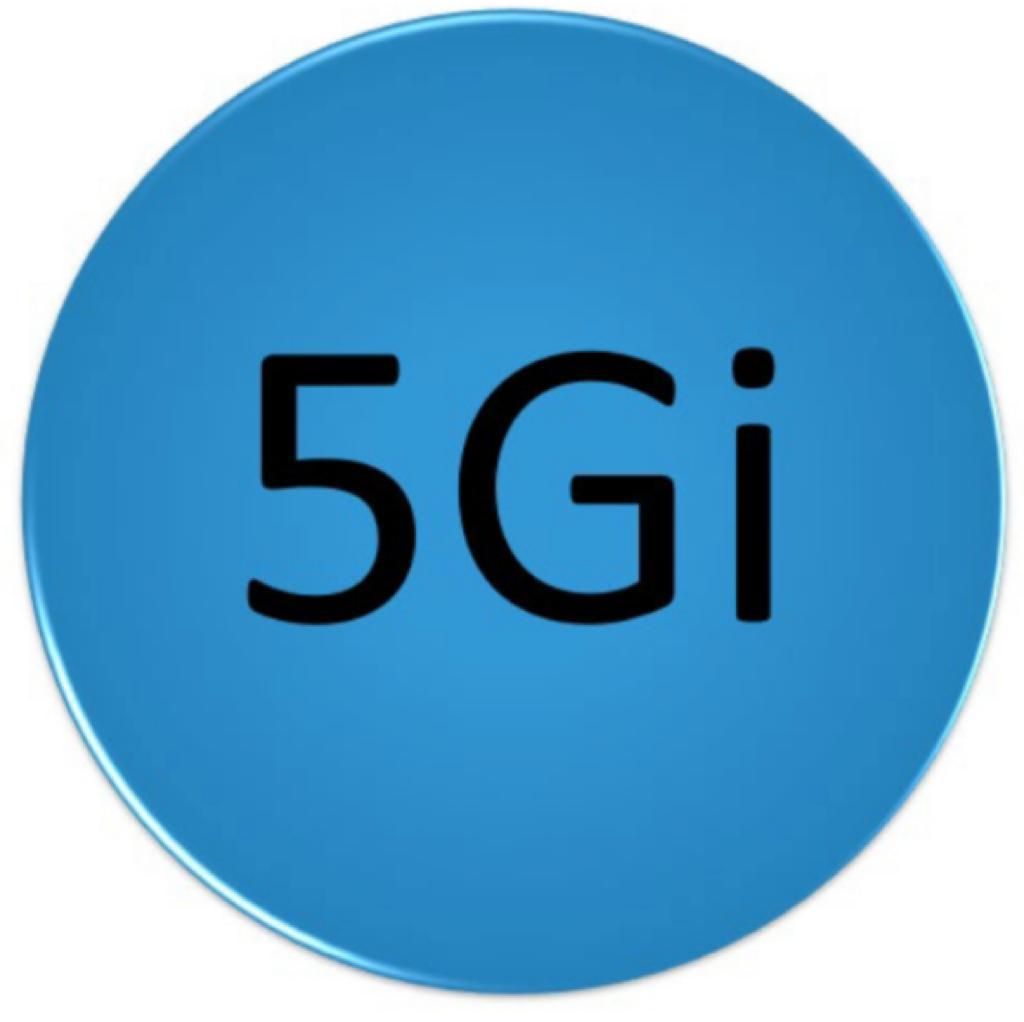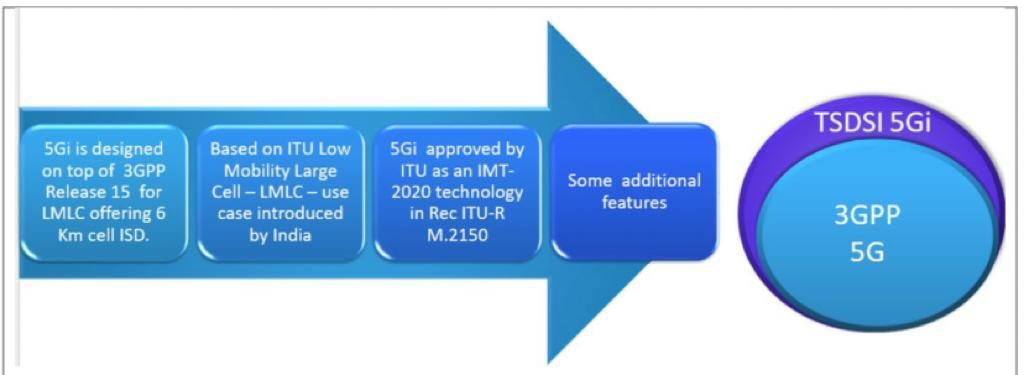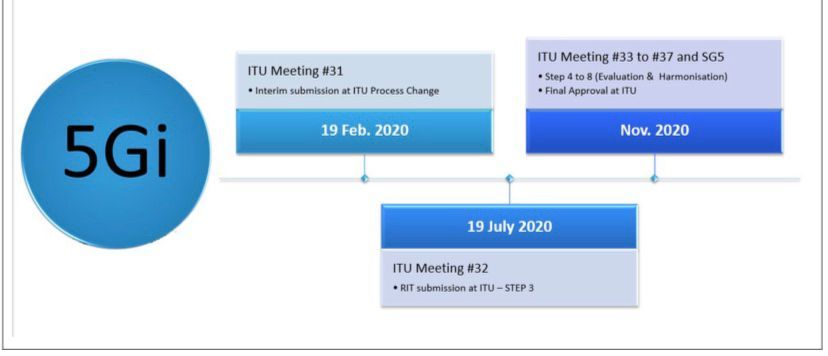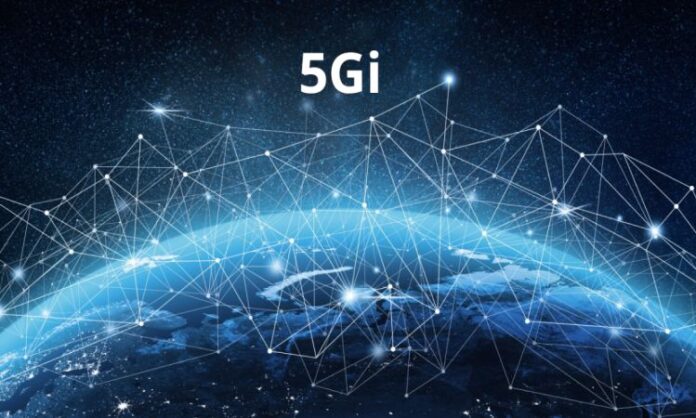New Delhi: It is for the first time in the history of telecommunications that “Indian Standard on 5G” has been accepted as one of the candidate technologies of 5G (Fifth Generation) by International Telecommunication Union (ITU). The 3rd Generation Partnership Project (3GPP) technology was the other technology approved by ITU as 5G technology (or 5Gi).
The ITU is an agency of the United Nations (UN), whose purpose is to coordinate telecommunication operations and services throughout the world. Originally founded in 1865 as the International Telegraph Union, the ITU is the oldest existing international organization.

The name given to India 5G technology is 5Gi. The 5Gi technology has been conceived to address India specific needs to cover very remote and rural areas with less numbers of Base Stations (Towers). Technically it is called Low Mobility Large Cell (LMLC). This was the gap in the technology developed by 3GPP, which is being rolled out across the globe. 5Gi has been developed by India on top of 3GPP 5G technology by adding India specific needs. As such 5Gi gives additional feature of large rural and remote coverage with less investment.
The 5Gi technology has been developed by Telecommunications Standards Development Society, India (TSDSI). TSDSI is an industry led not for profit organisation, recognised by Department of Telecommunication (DoT) as National Telecom Standards Development Organisation (NTSDO). The Indian Telecom Industry, comprising operators and manufacturers, academia and R&D organizations came together to form TSDSI on 7 January 2014, as an embodiment of the Government’s resolve, expressed in the National Telecom Policy 2012 (NTP 2012), to create the NTSDO, for contributing to next generation telecom standards and drive the eco-system of IP creation in India.

Indian 5G requirements and solutions
3GPP 5G technology mainly focuses on Higher throughput (eMBB) and massive Internet of Things (IoT) and driven by dominant global needs. The India’s need is different from global needs and hence there was a need to have our own technology. India 5Gi technology is affordable and provides deep penetration of wireless broadband in rural areas. It provides robust coverage for IoT in dense urban and large rural areas. Indian companies , startups and academia made contributions in developing 5Gi technology.
What is Inside 5Gi?
Although explanation will become complex, the below infographics gives an idea and people with engineering background can understand better.

5Gi Journey at ITU
In fact, India was trying to include above technology as global standard being made by 3GPP, however we could not succeed there. That left us with option to create our own technology and reach out to ITU for its approval. We were successful in achieving this goal. The brief journey of 5Gi at ITU can be understood by below infographics.

Challenges in implementation of 5Gi in India
Indian telecom industry is dependent on global suppliers like Nokia, Ericsson, Samsung and some Chinese companies to rollout telecom equipment. These companies were showing resistance in implementing 5Gi technology in the name of additional effort and cost involved and for keeping 3GPP 5G technology as single global standard. They argued about complexity in maintaining two 5G technology will be difficult and economy of scale can not be achieved. The only solution left was to include 5Gi technology in 3GPP specification and make it a global standard. India’s consistent hard work at 3GPP paves the way for its inclusion into global standard.
Also Read: Telecom Engineering Centre ties up with pvt firm for 5G eco system testing
Merging of 5Gi and 3GPP 5G standards
In a significant development, stakeholders across the globe came together at the RAN plenary meeting of global standards development body 3GPP and agreed for Merger of 5Gi technology requirements with 3GPP 5G Standards to enable enhanced coverage to benefit rural and remote settings, globally. TSDSI’s 5Gi standard has now been formally merged with the 3GPP 5G Standard and implemented into the 3GPP Rel-17 NR specifications in the recently concluded RAN#95e meeting. 3GPP RAN approved two Rel-17 Change Requests (CRs) that enables Pi/2-BPSK waveform with filtering to be implemented in the 5G Networks. Now 5Gi is part of global standard and a pride for India.
Ashok Kumar is Director (Wireless Access), National Telecommunications Institute for Policy Research, Innovations & Training (NTIPRIT), Department of Telecommunication (DoT), Ghaziabad




